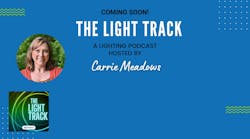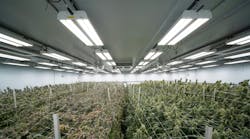After attending the Horticultural Lighting Conference, Maury Wright notes technical and logistical challenges in the application sector that require a different way of thinking when it comes to advancing products and manufacturing opportunities.
We held our second US Horticultural Lighting Conference just days before this issue of the magazine went to print. An in-depth article on the conference will have to wait for a future issue. But here I offer some quick thoughts. It's a fantastic opportunity for LED and solid-state lighting (SSL) manufacturers, but also one with technical and logisticchallenges.
Interested in articles & announcements on horticultural lighting?
Philip Smallwood, director of research at our Strategies Unlimited business unit, quantified the lighting opportunity. For 2017, Smallwood projected that the horticultural lighting market would total just over $4B (billion) in revenue and grow to the $8B range by 2022. But the bulk of the market is based on legacy light sources today.
For 2017, LED installations and hybrid LED/HID installations will represent less than 25% of the market. Still, there is plenty of opportunity for LEDs. Smallwood projects that revenue from LED-based products will approach $3B by 2022. Smallwood further discussed specific niches such as vertical farming and legalized cannabis. Those details and much more are in the new "Horticultural Lighting: Market Analysis and Forecast 2017" report from Strategies Unlimited.
Turning to the technical presentations, an unexpected theme arose throughout the day. In many ways, plants are way more complex than humans when it comes to characterizing the performance and efficiency of lighting. Now that statement may not be literally true. But in the plant world, there are so many varieties or cultivars, and most have different optimal light recipes. Moreover, plants have varying needs at different times through the growth cycle.
Still, there is one important commonality between lighting for plants and lighting for humans with respect to LED sources. We held our first Lighting for Health and Wellbeing Conference this past summer in Newport Beach, CA. A key theme then was the tunability in spectra that LEDs bring to human-centric lighting (HCL). That tunability will also be important in horticulture. Unfortunately, no one knows in either application exactly what the ideal spectrum is in terms of delivering tangible benefits - increased yield and better tasting produce, for example, in horticulture.
The complexity of the application extends to logistics issues with market transformation programs and the ability for buyers of horticultural lighting products to receive rebates or utility incentives. For example, the DesignLights Consortium (DLC) is a market-transformation organization that was originally formed by a group of utilities to facilitate the transition to SSL in general illumination. Over time, the DLC has developed a broad qualified products list (QPL) covering lamps and many types of luminaires. It ensures that qualified products are eligible for rebates.
The DLC would like to develop a QPL for horticultural lighting products. But the industry is still developing standards specific to horticulture, as we will discuss in our upcoming feature article. And tunability will further complicate the issue - as it does in HCL. It can be almost impossible to discern a parameter such as efficiency or efficacy when spectra are changing.
The technical challenges and the opportunities in the horticultural sector are both large. We need to solve the challenges - the positive impact on society and the environment depend on it.
Maury Wright, EDITOR







